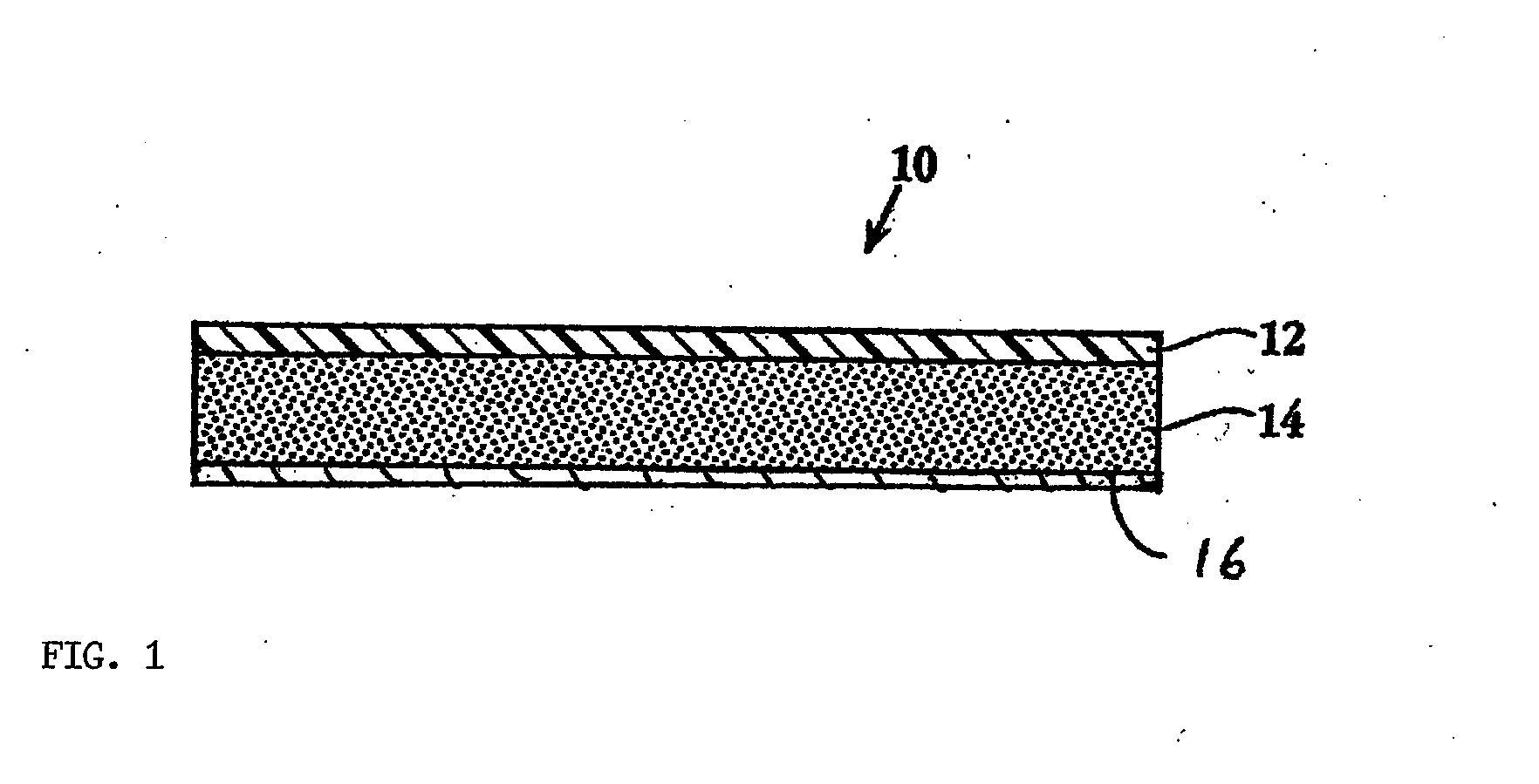Transdermal Patch and Method For Delivery Of Vitamin B12
a technology of vitamin b12 and transdermal patch, which is applied in the direction of biocide, bandages, inorganic non-active ingredients, etc., can solve the problems of oxidative degradation of vitamin b12, inability to meet the needs of patients, and it takes years for symptoms of deficiency to develop, so as to prevent oxidative degradation of vitamin b12
- Summary
- Abstract
- Description
- Claims
- Application Information
AI Technical Summary
Benefits of technology
Problems solved by technology
Method used
Image
Examples
example 1
Transdermal Delivery Patch for Vitamin B12
[0083]The present example describes the preferred embodiment for the manufacture and formulation of a transdermal patch according to the invention. For aesthetic and consumer ease-of-use, polyethylene foam ( 1 / 32″ thick) [available under the tradename VOLARA from Voltek] was selected as the fabric-style impermeable backing layer. White silicone-treated-polyester, about 4 mil thick, gives the liner enough stiffness to be easily handled by an arthritic subject.
[0084]An emulsion based adhesive was chosen to ease the incorporation of vitamin B12 although solvent based adhesives (such as polyisobutylene, polydimethylsiloxane, or acrylate copolymers) could have been chosen. Other key considerations included controlling skin irritation levels of the adhesive including modifiers, proper anchorage of the adhesive to the backing, sufficient skin tackiness to adhere for up to 24 hours yet release without damaging the skin, and wet adhesive characteri...
PUM
| Property | Measurement | Unit |
|---|---|---|
| wt % | aaaaa | aaaaa |
| wt % | aaaaa | aaaaa |
| wt % | aaaaa | aaaaa |
Abstract
Description
Claims
Application Information
 Login to View More
Login to View More - R&D
- Intellectual Property
- Life Sciences
- Materials
- Tech Scout
- Unparalleled Data Quality
- Higher Quality Content
- 60% Fewer Hallucinations
Browse by: Latest US Patents, China's latest patents, Technical Efficacy Thesaurus, Application Domain, Technology Topic, Popular Technical Reports.
© 2025 PatSnap. All rights reserved.Legal|Privacy policy|Modern Slavery Act Transparency Statement|Sitemap|About US| Contact US: help@patsnap.com


